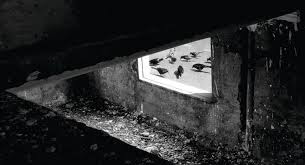- Housekeeping Bill Forsyth
- Full Metal Jacket Stanley Kubrick
- Evil Dead 2 Sam Raimi
- Empire of the Sun Steven Spielberg
- Law of Desire Pedro Almodovar
- High Tide Gillian Armstrong
- Under the Sun of Satan Maurice Pialat
- Radio Days Woody Allen
- The Good Father Mike Newell
- Near Dark Kathryn Bigelow
Honorable Mention
White of the Eye -- Cammell,
The Cry of the Owl -- Chabrol, No Way Out -- Donaldson,
Family Viewing -- Egoyan, Sign 'o' the Times Prince, Magnoli
Films I Enjoyed
Rouge, Raising Arizona,
Roxanne,
Withnail and I, Someone to Watch Over Me,
Broadcast News, The Stepfather,
The Bedroom Window, House of Games,
Innerspace, Hope and Glory,
Candy Mountain, Maurice,
Black Widow, The Princess Bride,
Tin Men, The Untouchables,
A Nightmare on Elm Street, Porterhouse Blue,
Adventures in Babysitting, The Last Emperor,
Robocop, Pelle the Conqueror,
Robocop, Pelle the Conqueror,
Dirty Dancing, The Dead,
Nadine, Wall Street,
Prick Up Your Ears,
The Hidden, Moonstruck,
The Hidden, Moonstruck,
China Girl, A Prayer for the Dying,
Stakeout, Overboard
Below the Mendoza Line
Below the Mendoza Line
Extreme Prejudice, Sammy and Rosie Get Laid,
The Witches of Eastwick, Angel Heart,
Epidemic, Street Trash
Planes, Trains and Automobiles, Straight to Hell,
Gardens of Stone, Baby Boom,
Gardens of Stone, Baby Boom,
Cobra Verde, Ishtar,
The Believers, Barfly,
The Lost Boys, Spaceballs,
That's Life, Fatal Attraction,
That's Life, Fatal Attraction,
Three Men and a Baby, Summer School
Prince of Darkness, The Running Man,
Prince of Darkness, The Running Man,
La Bamba, Lethal Weapon,
Throw Momma From the Train, Predator,
Throw Momma From the Train, Predator,
I Was a Teenage Zombie,
Hellraiser, Good Morning Vietnam





















